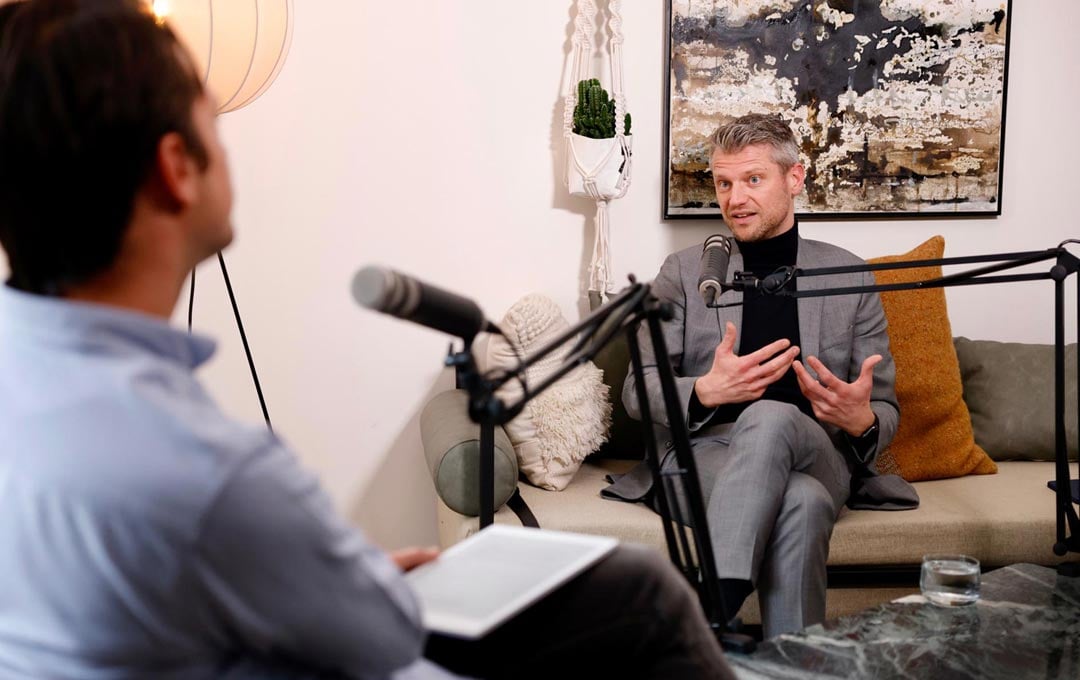
Relive our live event
A unique look behind the scenes of a Best Managed Company
During an interview, we'll take you through the in's and out's of business management in 2021
Missed our live event?
No worries! We have listed all the management tips and tricks for you. Here are the topics we covered:
- COVID-19: What have we learned, what does the future look like management-wise?
- Financial insights: The importance of well-defined KPIs, linked to widely supported corporate strategy.
- Strategy: Employee engagement and making business goals happen.
- Innovation: From idea to product, every employee contributes.
- The War for Talent: How does that younger generation look at companies and what about employee shareholdership at EASI.
Key takeaways
1. Communication is the key to successful business management.
Like many companies, we have been scratching our heads in March 2020. Not every sector is the same and we were lucky that the IT sector was "spared" during this crisis. We have always tried to react to the communications of the various authorities (which may or may not have been always that clear) and often even a little earlier. By setting up a committee of 3 people (excluding myself), we ensured that we were able to respond quickly during the past COVID periods.
But if there's one advice I can give from all of this, it's communication. Communication is very important in any crisis, in fact throughout business management this is the common thread. You want people to support the decisions you make as a company, you want them to stand behind them. If you want to achieve this, you have to communicate transparently about why we are making this decision and why in that way.
Involving employees in these decisions creates a level of commitment to the company that can only benefit it. No better way to know how your company is doing than to ask your employees. We do this both formally and informally, through surveys or during one-on-one conversations. We ask for their opinion, vision, how they are doing, but also what could be better. Because we can have our vision, but from these answers we also compile statistics, which give us a better overview and that is what is really crucial. Involving your employees and actually doing something with their feedback.
2. What about homeworking after corona?
If there is anything we have been thinking about over the past few months with our management, then it is mobility and the location of our offices. We are in the middle of a growth sprint and before COVID-19, this was accompanied by additional office space. Today we are looking at this somewhat differently. Together with our staff (and very quickly at their request) we have developed a new home-working policy. Previously, we had stuck rather strongly to the importance of seeing each other in the office. In our opinion, this is something that only makes the group spirit stronger. In our new policy, it is no different.
Where we used to allow homeworking only from a certain level or for a specific reason, we have now opted for an "activity-based policy". This means that we will rather look at the employee, what is your function, your task package and in function of that we will decide where you can perform which task, either at work, at home or at the customer.
3. KPIs are meaningless when they are not linked to a strategy
To put it very simplistically: if you drive to the south of France by car, you continuously look at a whole set of parameters, how fast am I driving, how fast can I go, how much fuel do I have left, when will I arrive, how much traffic jam is there. With a business, it's no different. Just like the purpose of your journey, your business must have a clear vision with the right KPIs linked to it. You need to know what you want to follow up on and what you want to do and as soon as orange lights start flickering you need to take consistent action.
To do this, as management you really have to take the time to start defining a strategy. And in a modern company that is a mix of top-down and buttom-up. To determine a strategy you have to know what is going on with your people. They are the ones who are in daily contact with customers and they are therefore also the ones who are best placed to know what direction to take. Therefore try to break through the silos around departments. Only then will you achieve the full potential.
4. Strategy only really makes a difference if you create a dynamic around it
Where it often goes wrong for many organizations is that strategy is something that is worked out with management. It's something that is very high-minded, of which the management is proud of. But when you ask three months later in the corridors: "what exactly is strategy?" you often get many different answers.
One advice I can give there is that companies need to focus more on executing strategy. Because that's where we can really start to create impact, by getting the entire company behind that same strategy. If you want to roll out strategy then first and foremost it's all about clear communication (again). Mentioning the strategy once a year at a Christmas drink is just not enough.
In addition, strategy is something you have to be able to track, it must be measurably defined in KPIs. If strategy cannot be followed, it will never be supported, so you need the right tools for this. Both for the follow-up of KPIs and for creating a dynamic around your strategy.
5. You don't win the war for talent with a ping pong table, a car and a fruit basket. The new generation want an adventure
A lot of companies today are focusing on the fun perks and benefits that come with a job. Of course, we do too, work should be comfortable, the work environment should be pleasant and there should be room for fun at work. But if you really want to engage people, if you really want people to be involved in what you do as a company, then that ping pong table is going to help very little.
It's about other things, it's about being authentic, it's about being transparent, about giving people trust, recognition, etc. Those are really the things that you can start to make a difference with. In order to get others to take ownership, business leaders will have to get out of their comfort zone and therefore sometimes put their ego aside.
Engagement and commitment are things that depend heavily on the company culture and that starts with the values of your people. Companies need to be very mindful of the values that they consider important and once you have defined those you need to make sure that they live in the organization, that they are followed and evaluated. Go and see how they feel about those values and how they project themselves into them, and that will determine the evolution that someone will go through. Recruiting people based on well-defined values will only help in the future for your company to reach its full potential..
Also interesting for you
EASI leads the way in Belgium in terms of employee shareholdership
IT company EASI welcomes 51 new shareholders. Today EASI employs 305 people, 105 of whom are shareholders. This means that 34% or 1 in 3 employees at EASI own shares in the company.
The ultimate guide to increase employee engagement
To help you find the right strategy, we at EASI (Spoom) have put together this
E-book to guide you through the new era of employee engagement.
How to break down organizational silos for better data-driven decision-making?
Organizational silos are increasingly seen as problematic in companies in full expansion. They refer to the gap between different departments, data, managers and the corporate vision. And, just when you need data the most, they make data-driven decision-making seem implausible.



